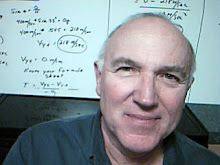This course has encouraged the teacher-student to become more aware of the human brain and how information is processed and retrieved. The theories presented are not new and while many teachers already utilize many similar theories and strategies in their class, the course has encouraged a refocusing that benefits both the teacher and student.
Understanding the Brain.
In his Dual Coding Theory (1986), Albert Pavio asserted that linguistic and non-linguistic associations help create the best scenario for recall. How often have we detected an aroma that conjured up a long forgotten memory or heard an old tune on the radio that caused the listener to think fondly of experiences long past. There is no doubt that as we learn more about how our brains process information, we adapt our teaching styles to ensure that establish the multi-sensory networking required for long-term memory retrieval.
As teachers, it is our job to create as many associations as we can, in hopes that our students will establish lasting and multiple recall networks. Based upon my recent studies, I have redoubled my efforts to stimulate as many senses as possible when teaching my physics class. I create human analogs of molecular models when studying solids, liquids and gases. I spin bicycle tires to simulate gyroscopes as student hold the handlebars to sense the effects. I race around the room to visualize the differences between velocity and acceleration. I fling metal spheres out our classroom window when we study projectile motion. Do these extraordinary efforts achieve greater recall? I think that without a doubt they do. Assessment scores seem to be higher and there seems to be a new level of interest. I’ve actually heard kids say my class is fun, which is not often heard in a math intensive physics course.
There have been two primary foci of this course. The first was an understanding of how students process and recall information. The second has been a focus on technology to enhance learning. Based upon my studies, I have endeavored to enhance my course using VoiceThread tutorials. Several have been developed and posted on my WEB page. The initial reaction from my fellow teachers, parents, and students has been outstanding. Encouraged by the reaction and as a long-term goal, I intend to offer math tutorial in support of my physics class as well as a complete library of physics topics which mirror my in class work.
Another use of technology involves our new Platt High School WEB Radio Station. Our school has limited funds and consequently we do not encourage the arts. When the call came down asking for ideas and volunteers to establish new student clubs, I immediately thought of a WEB Radio. We now have 15 students on board and will be launching our News, Drama, Poetry and Commentary Segments within the next few weeks.
References
Paivio, A. (1986). Mental Representations. New York: Oxford University Press
skip to main |
skip to sidebar

A posting of issues that matter to teachers.

About Me
- John Chaco
- Teaching physics is my second career. My first career was engineering and while I enjoyed that career, teaching has been all I could have imagined and more. In fact, I often see many of my old colleagues and when I do, I start recruiting. We need good teachers. I live in Connecticut and teach at a high school in Milford. I am married with three children and six grand kids.



No comments:
Post a Comment